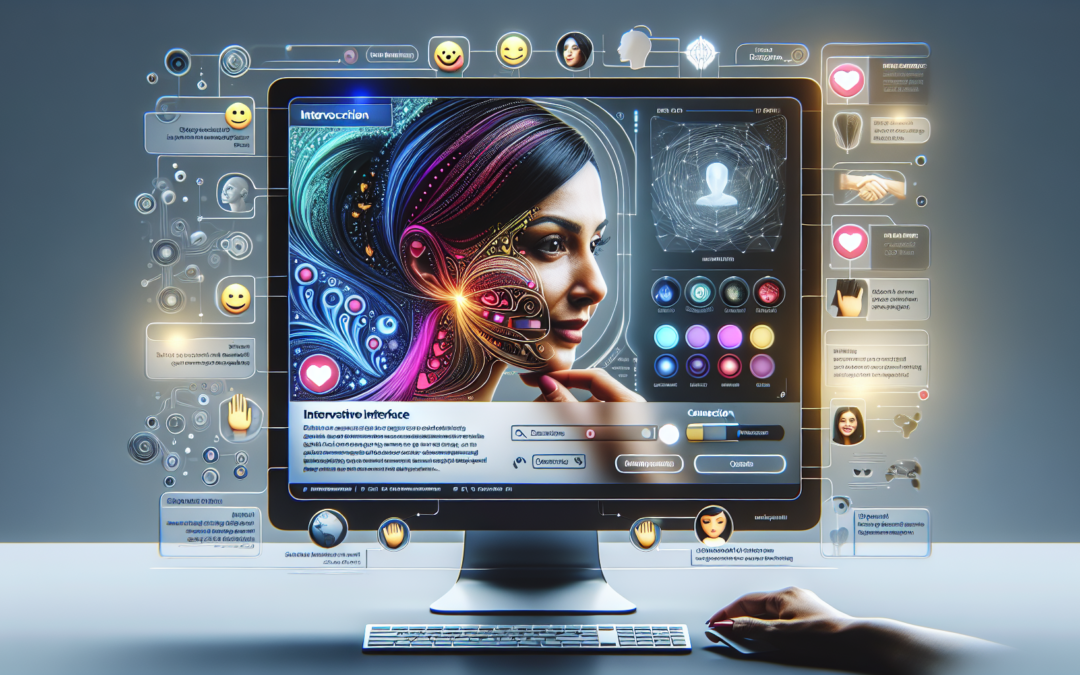Web Design is far more than a technical skill; it’s an art form that bridges the gap between brands and their audiences. Amidst the sea of pixels and code, it holds the capacity to stir emotions, foster connections, and create lasting memories. At RP Summit, we understand that a well-crafted web design is a gateway to not just engagement, but genuine human connection. Dive into the depths of colors, shapes, and user experiences, and discover how every click can evoke joy, curiosity, and trust.
Crafting Emotional Connections through Innovative Web Design
When it comes to making a lasting impression online, web design plays an essential role. In today’s digital age, users make split-second decisions based on the aesthetics and functionality of a website. This means that a well-thought-out design doesn’t just catch the eye but touches the heart, creating an emotional experience that keeps users engaged and coming back for more.
Here’s how innovative web design can create those profoundly emotional connections for your audience.
Understanding the Role of Mood Boards
One of the first steps in creating an emotionally resonant web design is developing a mood board. When designers embark on a new project, a mood board acts like a visual roadmap, setting the tone for the overall theme and aesthetic of the website. This vital tool helps translate abstract emotions into tangible design elements. Pictures, colors, and fonts are carefully chosen to evoke targeted feelings.
A cohesive mood board ensures every aspect of the website is visually aligned, creating a harmonious and emotionally engaging user experience.
For more insights on how elements come together, read our Comprehensive Guide to Visual Storytelling.
The Science of Color Psychology
Colors evoke emotions more powerfully than you might imagine. Specific colors can make users feel everything from joy to tranquility to urgency. Warm colors like red and orange are often stimulating and arousing, while cool colors like blue and green evoke a sense of calm and trust. Knowing how to apply these colors effectively can make a significant difference in the user’s emotional response.
It’s about striking the right balance to match the brand’s message and the emotional landscape you aim to create.
- Red: Passion, enthusiasm, urgency.
- Blue: Trust, serenity, professionalism.
- Green: Health, tranquility, growth.
If you are interested in delving deeper into the psychology of colors, check our post on The Impact of Color in Web Design.
Interactive and Engaging User Interfaces
Beyond just looking good, an emotionally connected web design must also function flawlessly. However, the concept of functionality extends beyond usability. Interactive elements such as animations, microinteractions, and engaging calls-to-action can elevate the user’s emotional experience. For instance, subtle animations can add a layer of pleasure and surprise to the user’s journey, making every interaction on the site not only functional but also delightful.
Moreover, intelligent user interfaces (UI) adapt to the user’s needs, personalizing their experience and making them feel special. They interpret user data to offer a more personalized interaction, which enhances satisfaction and builds an emotional bond.
Don’t forget to follow us on social media for more daily tips! Facebook, Twitter, and Instagram.
The Power of Storytelling through Visuals
Humans are inherently drawn to stories, and this has a lot to do with emotional engagement. Visual storytelling on a website incorporates elements like captivating images, videos, and even user-generated content to tell a compelling story. These images and videos should be of high quality, resonant with the brand’s voice, and impactful enough to convey emotion instantly. A well-crafted about page or a storytelling homepage can serve as emotional touchpoints that engage users on a deeper level.
For intelligent practices in crafting stories, visit Building A Narrative for Brand Connection.
Intuitive and Emotionally Resonant Navigation
Effective web design should ensure that the user’s journey isn’t just functional but also emotionally engaging. Intuitive navigation sets the stage for an enjoyable experience; frustrating navigation dampens the user’s emotional response. Thoughtfully placed menus and easy-to-understand categories go a long way in reducing friction, making users feel more comfortable and ultimately fostering an emotional connection.
Adding breadcrumbs and progress bars can further enhance this experience, making users feel guided and supported throughout their journey on your site.
Fostering Trust through Transparent Design
Trust is foundational to any emotional connection. Transparency in design cultivates trust by clearly communicating what the brand stands for and what users can expect. This can be manifested through clean, minimalistic designs, straightforward calls-to-action, and transparent policies. Users need to feel that they are in a trustworthy space where their interests and safety are prioritized.
Learn how transparency can elevate trust in our post on Creating Transparent Design.
Conclusion
Web design is a powerful tool in cultivating emotional connections between a brand and its audience. By understanding elements like color psychology, storytelling, and user interface design, businesses can create a web presence that resonates emotionally with users. At RP Summit, we strive to combine artistry with functionality to design websites that engage and captivate. Explore our blog for more inspiring insights, and don’t forget to follow us on Facebook, Twitter, and Instagram for daily tips and updates.

